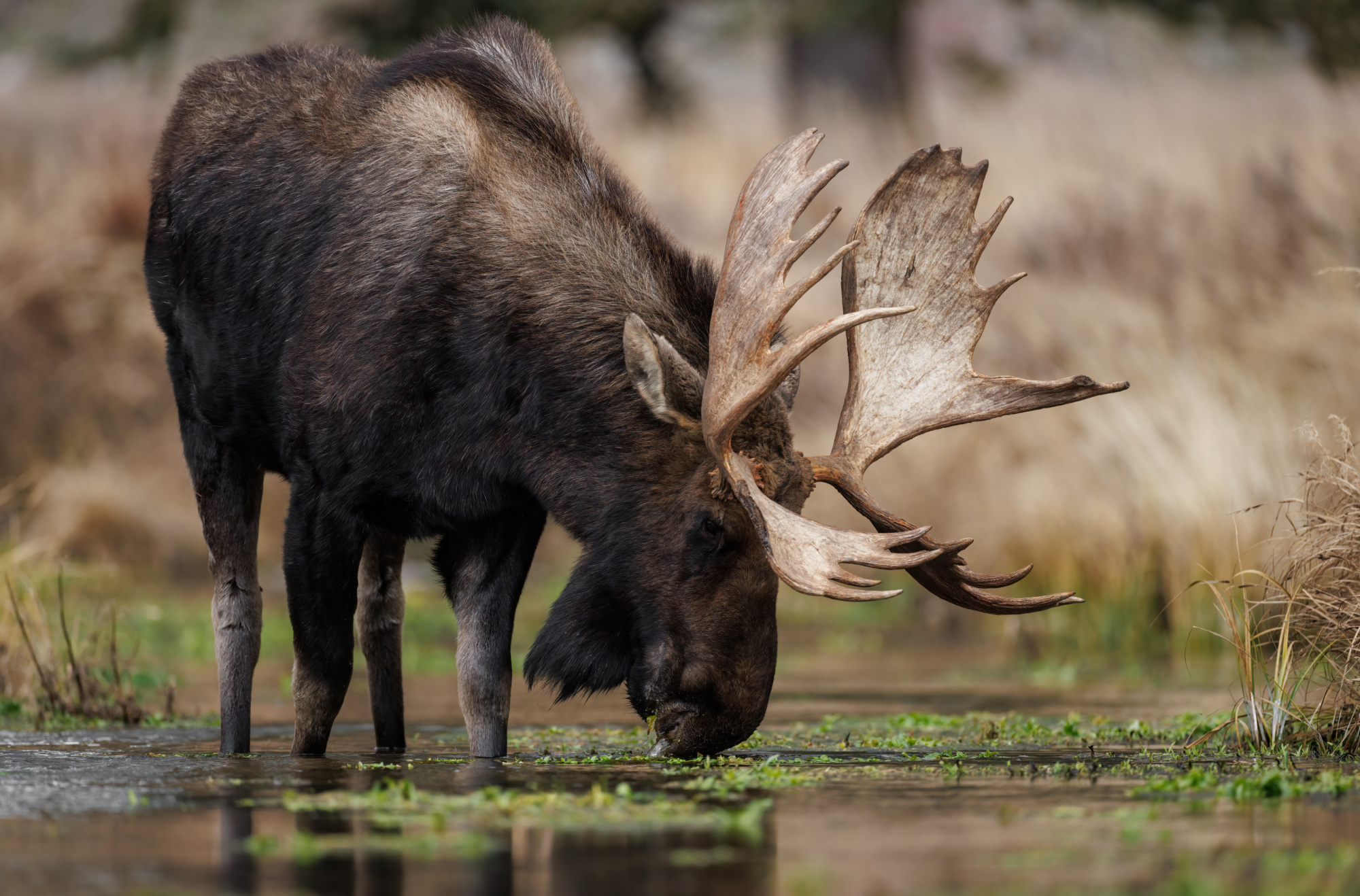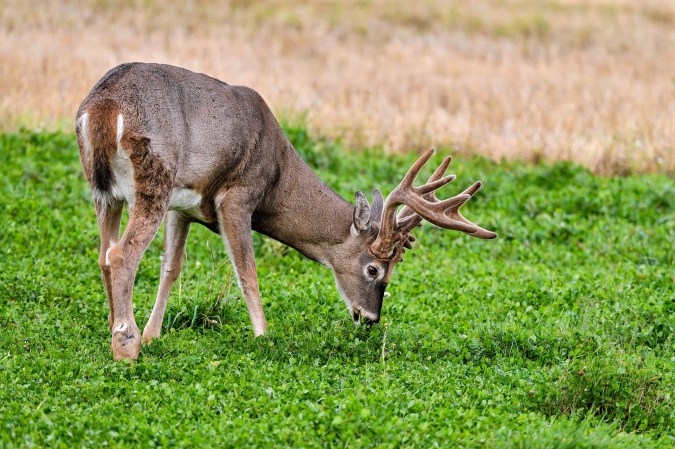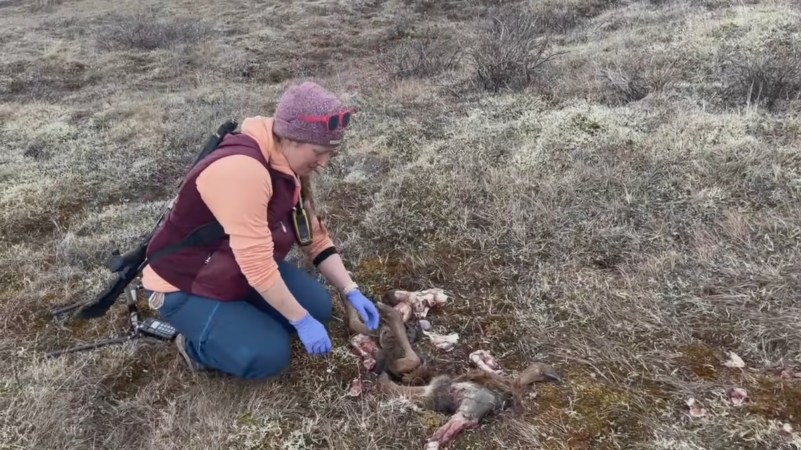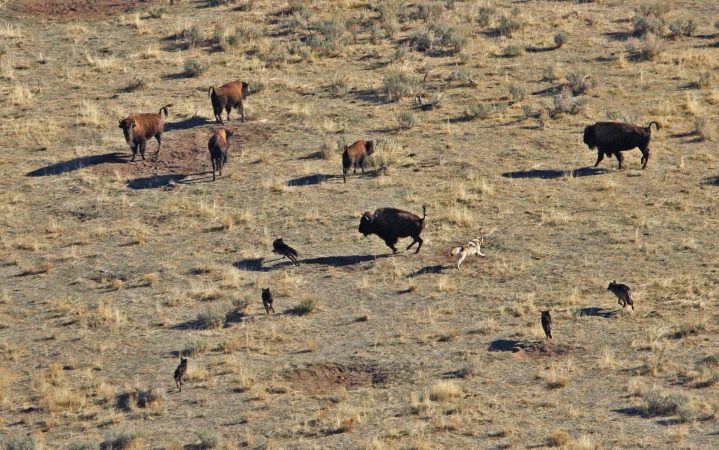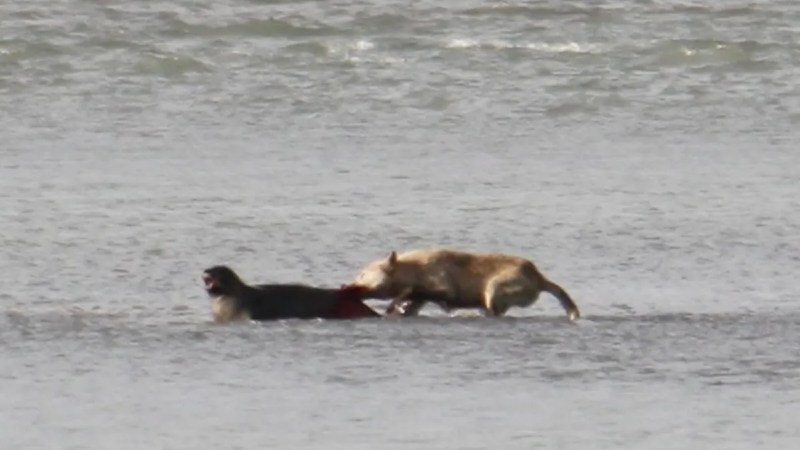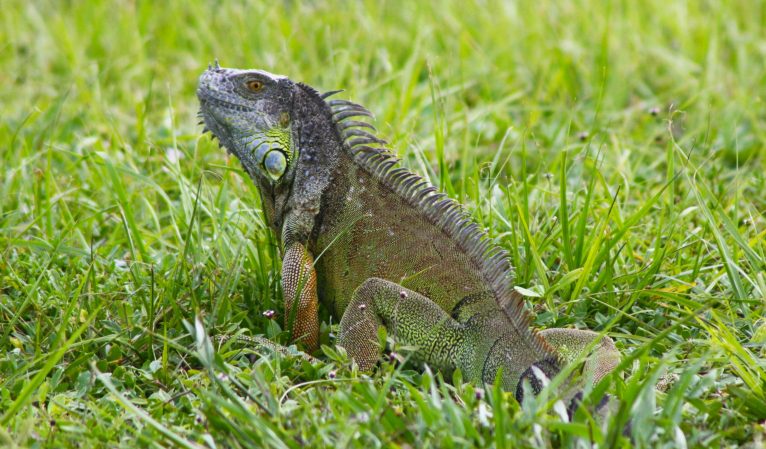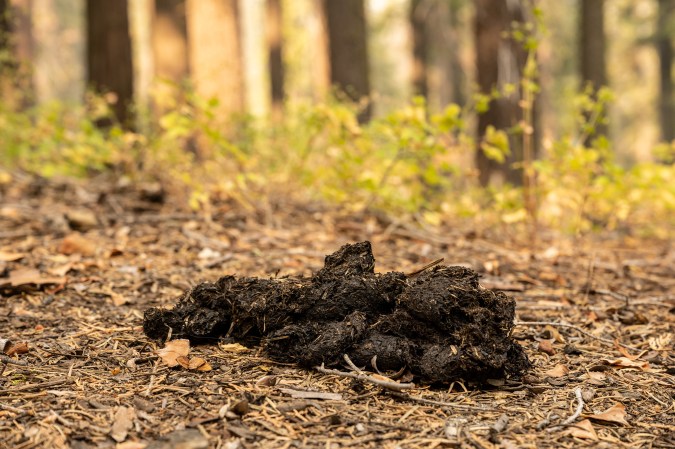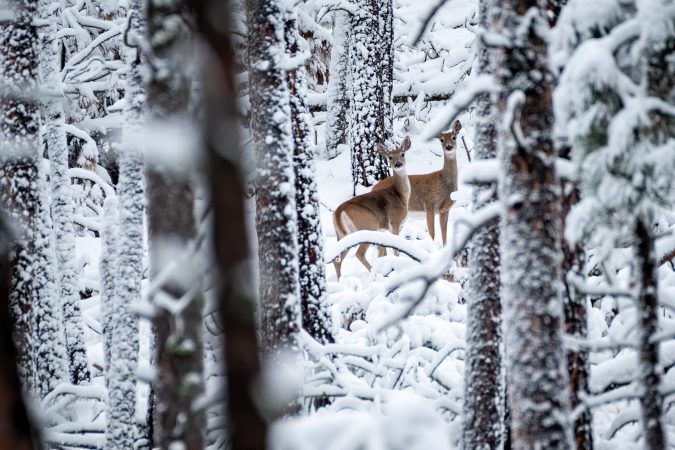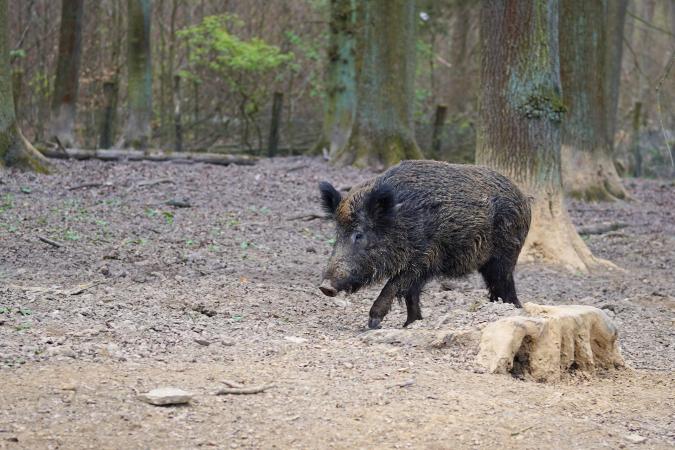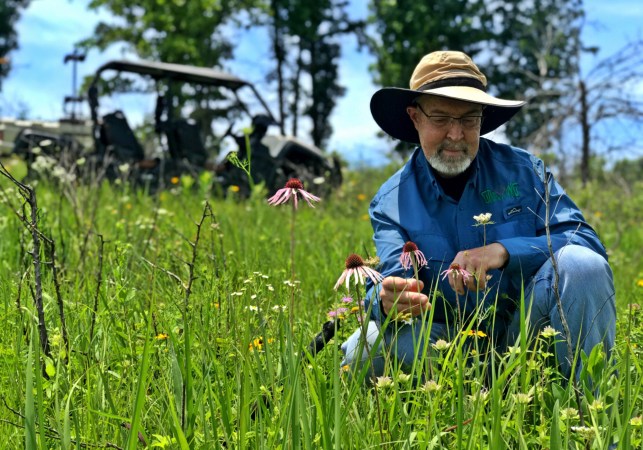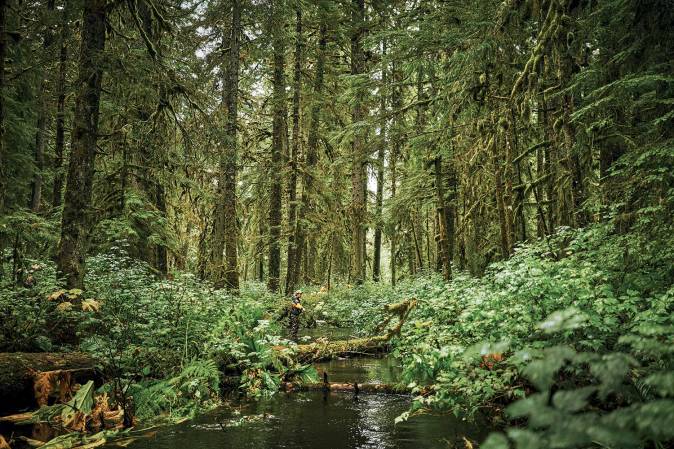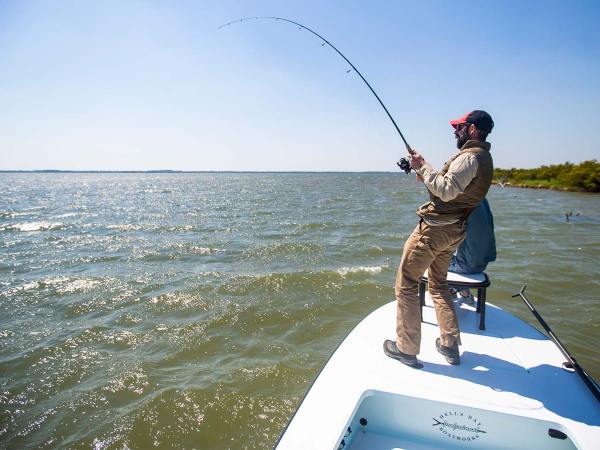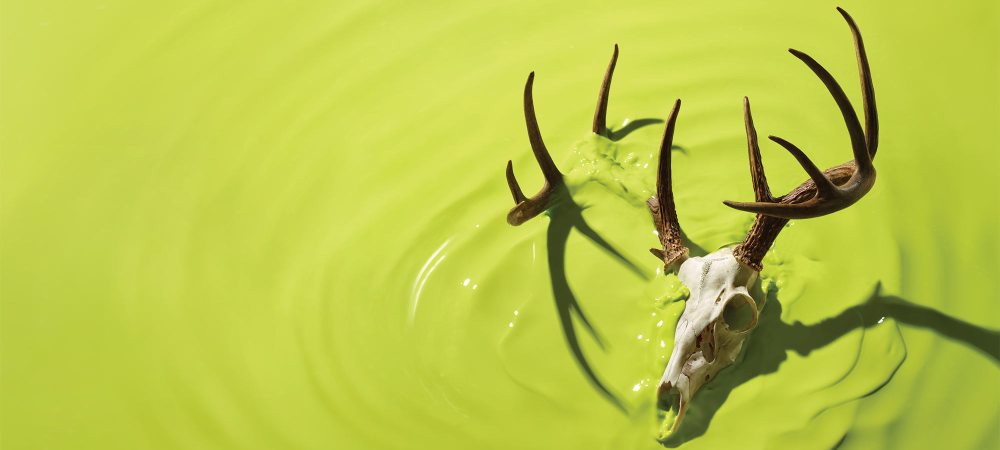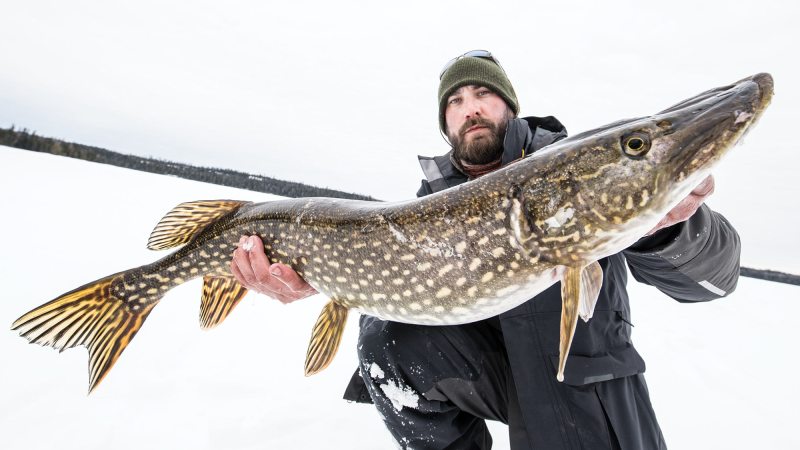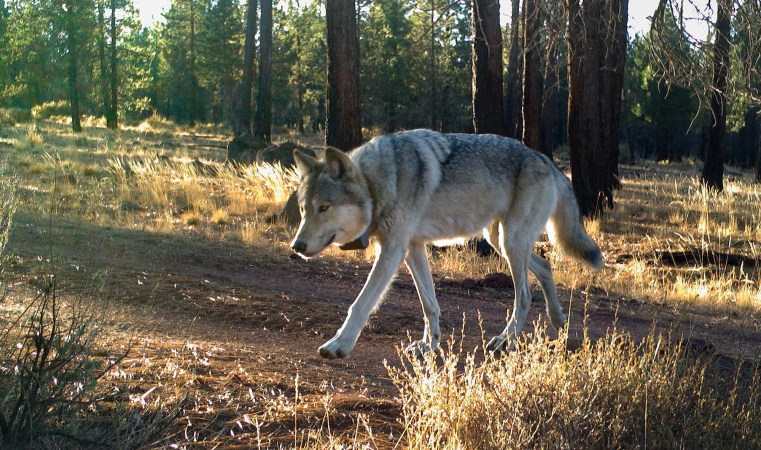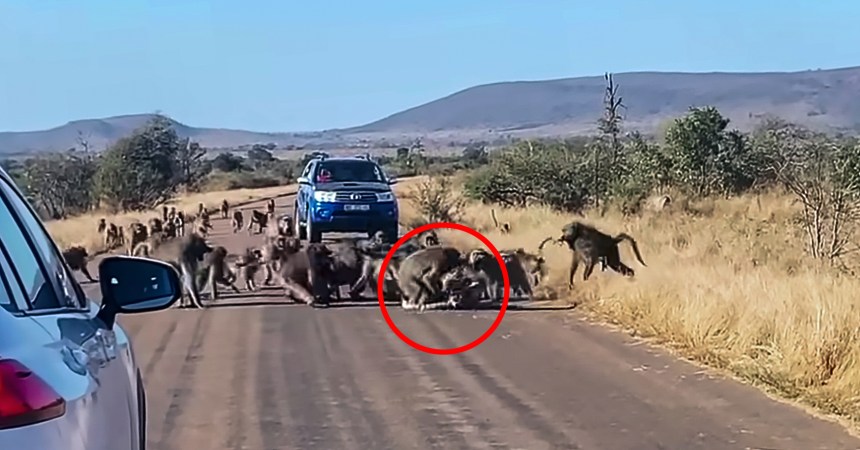With their shocking stature and loud calls, it’s no surprise that people are fascinated by moose and all the finer details of their existence, including what moose eat. They are a popular game species for serious hunters in northern reaches of North America and Eurasia. They produce hundreds of pounds of meat that can sustain a family through the whole year. (If you’re interested in learning how to hunt moose, read our guide.) So whether you’re interested in just seeing moose from a distance or getting close and harvesting one, a good first question to ask is “what do moose eat?”
As is the case with any other wildlife species with a wide geographic distribution, a moose’s diet depends greatly on where they live and what forage species are available to them. Their diets also change with the seasons, since most of their range sees such broad shifts in climate throughout the year.
No matter where they live or what time of year it is, moose require a lot of food. If you’ve ever tried to fathom how big a moose is, know first that a healthy adult moose can eat 40 to 60 pounds of food a day, or roughly 16,000 calories, when it’s available. Seeing as how an adult bull moose can weigh up to 1,600 pounds and stand 6 feet tall at the shoulder, it makes sense that they’d need so much sustenance. But where does all that food come from?
A Moose’s Favorite Food Sources
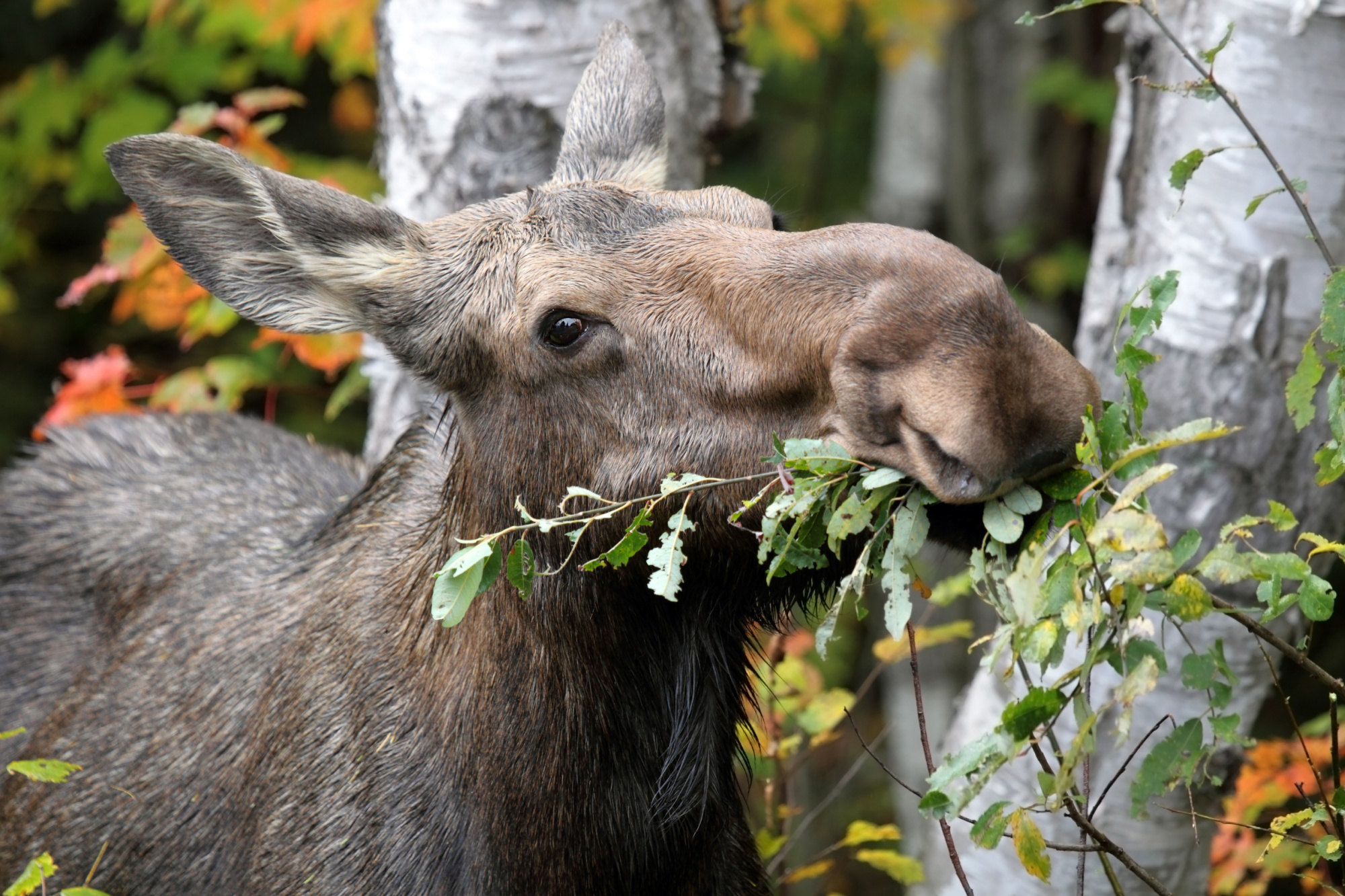
Despite how difficult it is to nail down a generic answer to “what do moose eat,” Dr. Steve Windels, an award-winning moose biologist at Voyageurs National Park, provided a preliminary list of food sources that moose seem to gravitate toward. They include:
- Aspen
- Birch
- Willow
- Hazel
- Pond lilies
- Pond weeds
- Horsetail
- Canadian yew
As the largest member of the Cervidae family (which includes deer and elk, among other species), moose diets are shockingly similar to deer diets, just at a much higher volume. The leaves, buds, and twigs on the ends of tree branches—what habitat managers call “woody browse”—comprises most of what a moose eats. But these big critters also eat a lot of nutrient-dense aquatic vegetation and even crops on occasion, Windels says.
He describes moose as a “circumboreal species,” which means moose live throughout the northernmost circumference of the planet in Alaska, Canada, and northern Eurasia. Their range extends down into the northernmost states in the U.S., the Rocky Mountains, and southern New England. This wide range means moose in different parts of the world eat different kinds of plants.
“Moose are generalist herbivores, so they eat a wide variety of stuff, but it varies from location to location based in large part on what’s available,” Windels tells Outdoor Life. “Here in northern Minnesota they’re eating a lot of deciduous twigs and leaves, like aspen, birch, willows, dogwoods, and shrubby plants. If you go somewhere like Scandinavia, they eat a lot of conifers.”
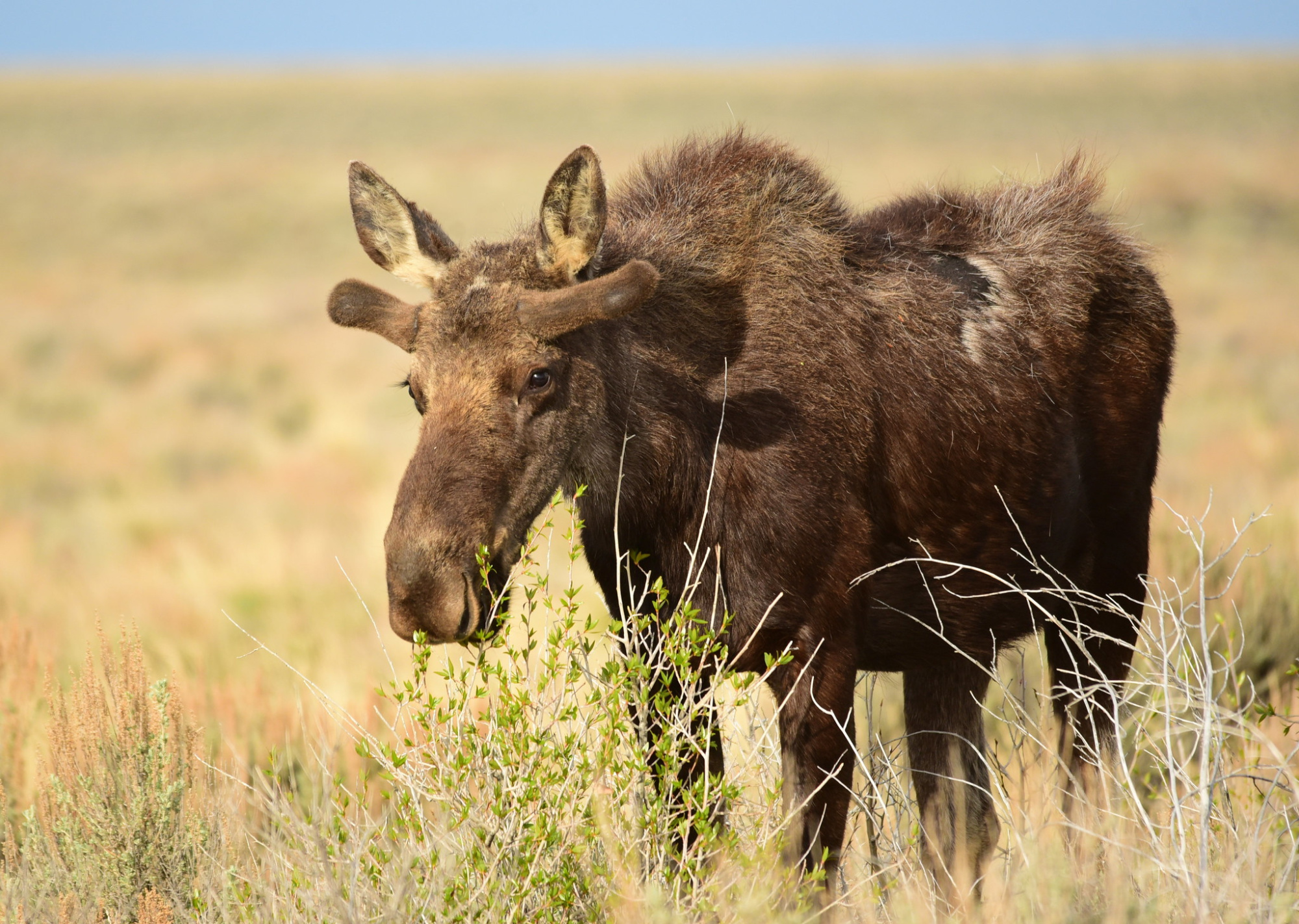
Moose from Maine to Alaska rely on birches, aspens, and willows. They also browse on maple, pin cherry, and mountain ash trees in the Northeast. In British Columbia, they eat highbush cranberries, false boxwood, and some subalpine fir trees. If you go somewhere in Scandinavia like Sweden, you’ll see moose chewing on pine trees, as well as bilberry and lingonberry shrubs. (Bilberries are practically interchangeable with blueberries and huckleberries, and lingonberries are also known as mountain cranberries or cowberries.)
Aquatic Vegetation
One of the most important components of what moose eat is found underwater. Aquatic vegetation supplies moose with much of their requisite sodium and other minerals, Wendels says. Pondweed, pond lilies, horsetail, and burweed are all popular across their North American distribution.
Moose have been known to dive well over a dozen feet deep to get this food, the Canadian Broadcasting Corporation reports. Their nostrils are adapted to act as valves that can shut water out while they dunk their long, sloping heads to grab at plants.

In other parts of the world, moose don’t rely as much on aquatic weeds and plants.
“Understanding what aquatic plants they eat is a little trickier because it’s hard to see what they’re doing under water,” Wendels says. “They seem to eat a lot of aquatics here, but they don’t really eat a lot of aquatics in Scandinavia. So again, it varies by location.”
Agriculture
When you think of moose habitat, you probably think of thick timber, lots of undergrowth, and water, rather than a cultivated field. But moose in some parts of the country will take to agricultural fields to eat large quantities of crops, just like deer and elk do. In western North Dakota, for example, moose eat sunflowers, soybeans, corn, and other standing crops.
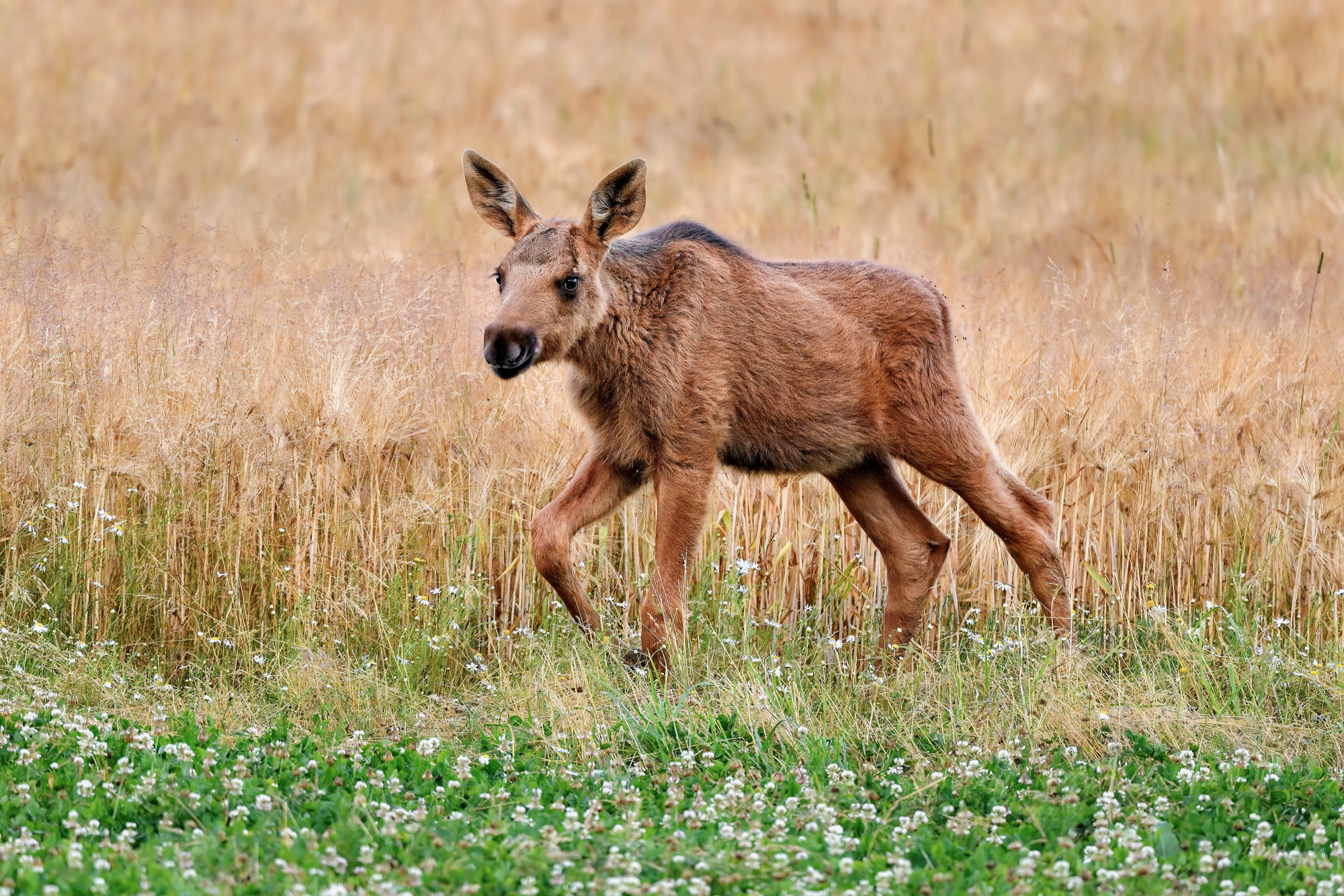
They don’t have much choice in regions dominated by ag, Wendels points out. But it doesn’t stop there. Moose will also seek out certain crops in areas with plenty of wooded moose habitat—places like Maine.
“Maine has a really high density of moose, and they grow a lot of broccoli in Maine,” he says. “They had moose eating in these broccoli fields and causing problems.”
Seasonal Shifts in What Moose Eat
The parts of the world where moose live experience extreme climate shifts throughout the year, which means a moose’s diet does, too.
“In the wintertime, when the leaves drop off deciduous trees, [moose are] just eating the twigs. That food has a lot more fiber in it and tends to be a lot less digestible,” Wendels says. “Come summer, when things do green up, they’re focusing more on leaves again. But in the winter, they’re just trying to survive and get through.”
Like other big game species, moose endure meager times in the winter, Wendels says. They lose a lot of weight, due to limited availability of nutrients and calories. When winter stretches out and spring green-up gets delayed like it did in the winter of 2022-2023, that’s when a lot of moose mortality happens. It also puts immense pressure on pregnant cow moose.
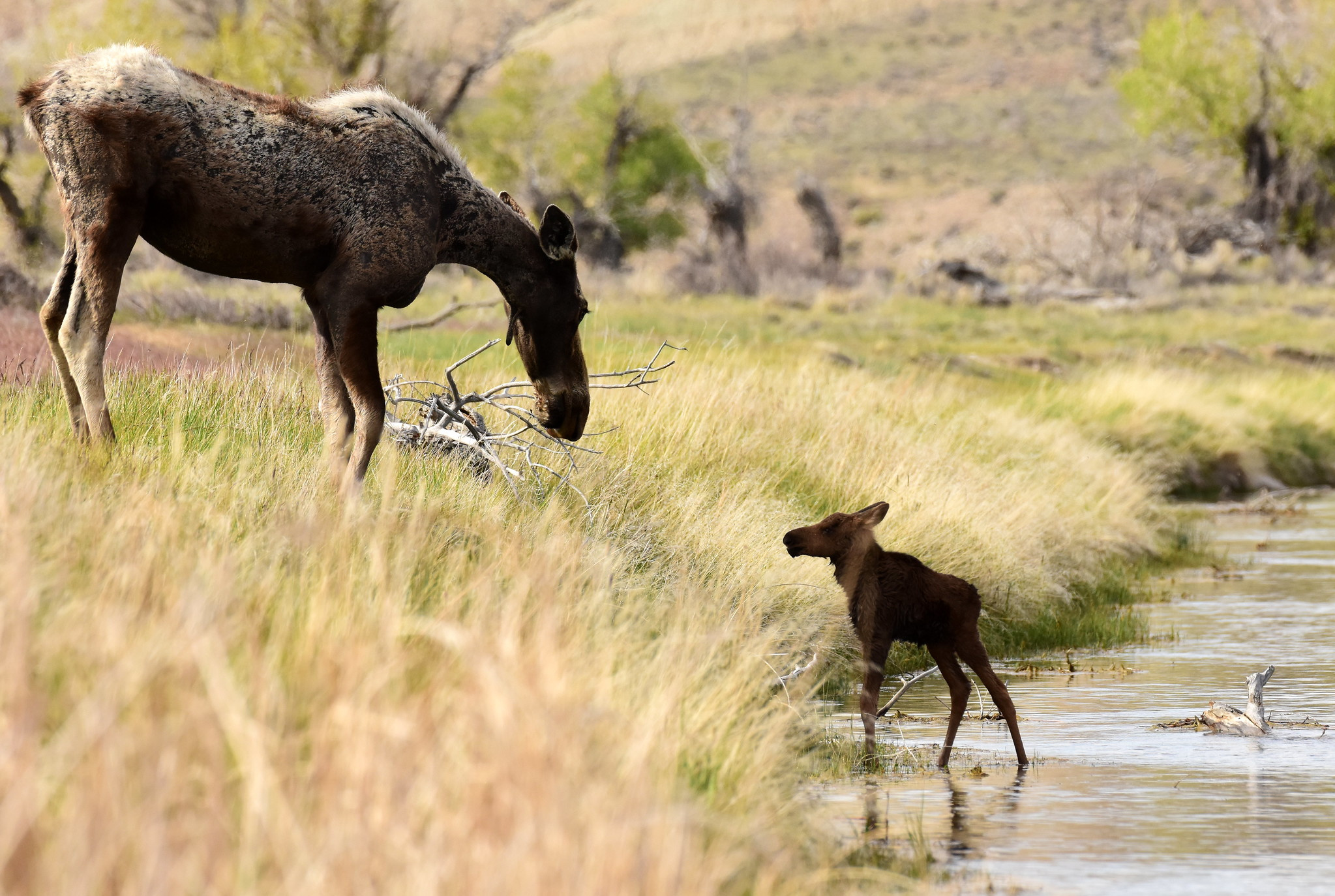
“They end up starving to death or succumbing to predation because they’re so skinny and weak,” Wendels says. “For females in particular, it’s tough. Most of them will be pregnant and gestating calves, sometimes twins, so they’re eating a diet that’s not super nutritious and still investing a lot of energy into growing that fetus. That’s a lot of extra stress.”
Moose Diet FAQs
It is rare for a moose to live longer than 20 years. While a cow moose’s average life expectancy is eight years and a bull’s is seven, plenty of moose live into their teens.
Yes. Moose change their diets throughout the year because they live in some areas with extreme weather shifts. They rely on low-nutrient, low-calorie diets to get through harsh winters, and they have an abundance of food sources in the warmer months.
Like their diet, a moose’s predators change depending on where they live. In Minnesota where Wendels lives, wolves and the occasional bear prey on moose. In the Mountain West and Alaska, moose have to worry about wolves, grizzly bears, and wolverines, mountain lions, coyotes, and other smaller predators when they’re weak, sick, elderly, or very young. If moose live in coastal regions, they also might succumb to an orca while swimming.
Final Thoughts on What Moose Eat
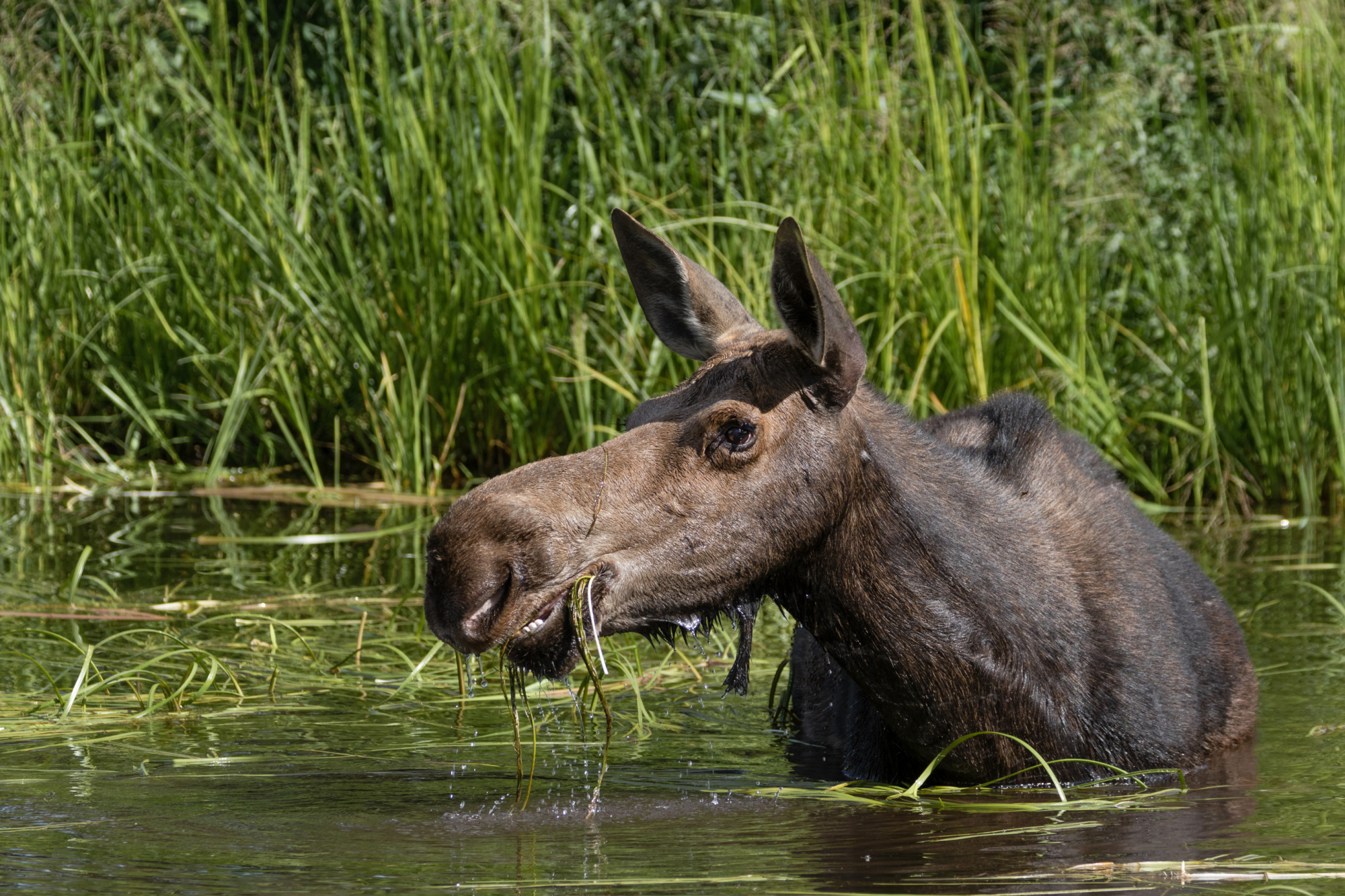
These giant cervids, just like any other wild game animals, attract a lot of attention and interest from humans, and especially hunters. Knowing what moose eat is helpful for a variety of reasons. The better hunters understand the diets of their game species, the better chance they have of being in the right place at the right time and having a successful hunt. (If you want to learn how to process moose steak, read our guide.)
So search for moose like an expert and look for ample willow, aspen, and birch trees, shrubby growth with lots of berries, and nearby water that offers a variety of pond weeds and other aquatic vegetation. If there’s a moose nearby to find, there’s a good chance you’ll find it.

